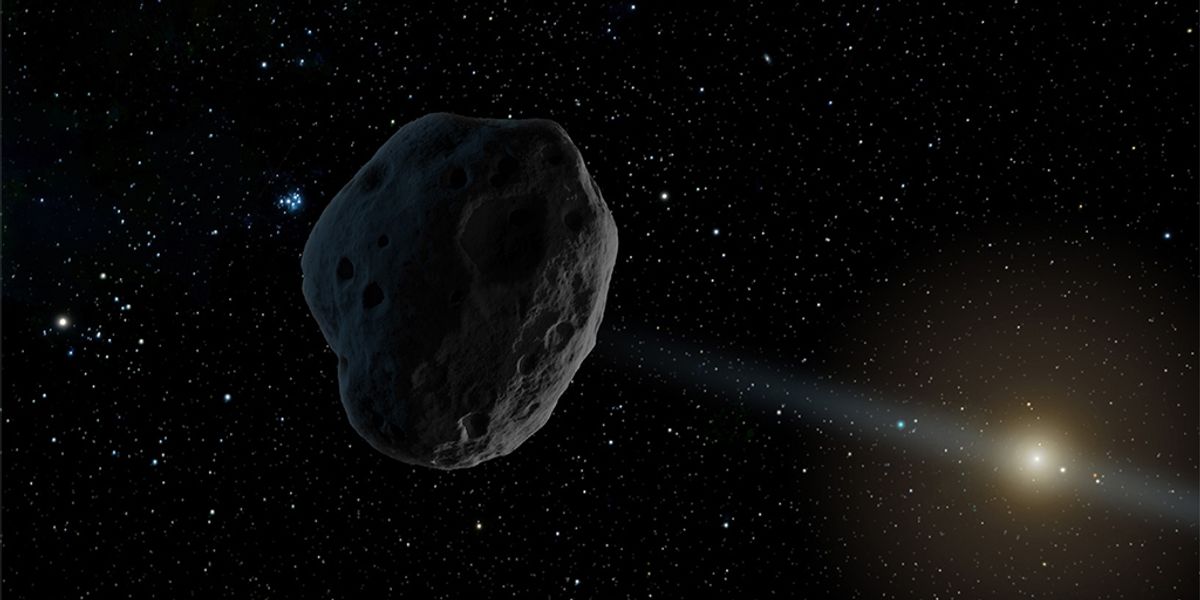In February 2020, numerous social media users were concerned about a potentially "planet-killing" asteroid that supposedly was expected to hit earth on the day after Valentine's Day. As is typical for this type of "armageddon" rumor, fears about this doomsday event were overblown and largely based on fear-mongering headlines:
International Business (IBT) Times published an article headlined: "Largest Planet-Killer Asteroid To Approach Earth This Month Arriving On Saturday."
The Express claimed: "NASA asteroid alert: Radars track a 20,000MPH space rock on 'close approach' this weekend."
All of these articles are somewhat based in reality. NASA monitors the skies for NEOs (near-earth objects), and a large asteroid was indeed approaching earth in February 2020. However, these articles led many people to believe their lives were in danger, and that the asteroid was expected to hit earth. But that simply isn't the case.
While these articles spend time talking about what would happen if a large asteroid actually made impact with the earth (complete with pictures of cinematic doomsday events), they all concede in their concluding paragraphs that this asteroid (asteroid 163373 or 2002 PZ39) won't come within 3 million miles of earth.
IBT writes (emphasis ours): "According to [NASA's Center for Near-Earth Object Studies], 163373 (2002 PZ39)’s near-Earth intersection will happen on Feb. 15 at 6:05 a.m. EST. During this time, the asteroid will pass over the planet from a distance of 0.03860 astronomical units or around 3.6 million miles away."
NASA confirmed this to us in a statement, writing:
"The trajectory of asteroid 2002 PZ39 is very well known. It will pass by Earth at a distance of about 5.77 million kilometers (approximately 3.59 million miles). The asteroid will approach no closer than about 15 times the distance of the Moon."
The Center for Near-Earth Object Studies (CNEOS) is constantly monitoring the skies for potentially dangerous asteroids. In fact, CNEOS currently lists about 20 asteroids that will pass safely by earth over the next month. Only one, a relatively small asteroid with an estimated diameter of about of 50 meters called asteroid 2018 GY, is expected to come within 1 million miles of earth.
Here’s a little more information about near-earth objects from CNEOS (emphasis ours):
On a daily basis, about one hundred tons of interplanetary material drifts down to the Earth’s surface. Most of the smallest interplanetary particles that reach the Earth’s surface are the tiny dust particles that are released by comets as their ices vaporize in the solar neighborhood. The vast majority of the larger interplanetary material that reaches the Earth’s surface originates as the collision fragments of asteroids that have run into one another some eons ago.
With an average interval of about 10,000 years, rocky or iron asteroids larger than about 100 meters would be expected to reach the Earth’s surface and cause local disasters or produce the tidal waves that can inundate low lying coastal areas. On an average of every several hundred thousand years or so, asteroids larger than a kilometer could cause global disasters. In this case, the impact debris would spread throughout the Earth’s atmosphere so that plant life would suffer from acid rain, partial blocking of sunlight, and from the firestorms resulting from heated impact debris raining back down upon the Earth’s surface. Since their orbital paths often cross that of the Earth, collisions with near-Earth objects have occurred in the past and we should remain alert to the possibility of future close Earth approaches. It seems prudent to mount efforts to discover and study these objects, to characterize their sizes, compositions and structures and to keep an eye upon their future trajectories …
… No one should be overly concerned about an Earth impact of an asteroid or comet. The threat to any one person from auto accidents, disease, other natural disasters and a variety of other problems is much higher than the threat from NEOs. Over long periods of time, however, the chances of the Earth being impacted are not negligible so that some form of NEO insurance is warranted. At the moment, our best insurance rests with the NEO scientists and their efforts to first find these objects and then track their motions into the future. We need to first find them, then keep an eye on them.
This is hardly the first time we've received questions about a potential "earth-killing" asteroid. In fact, we've been investigating rumors about doomsday asteroids since at least 2015. These fear-inducing reports have all come and gone without incident, and we expect that asteroid 2002 PZ39 will do the same.

